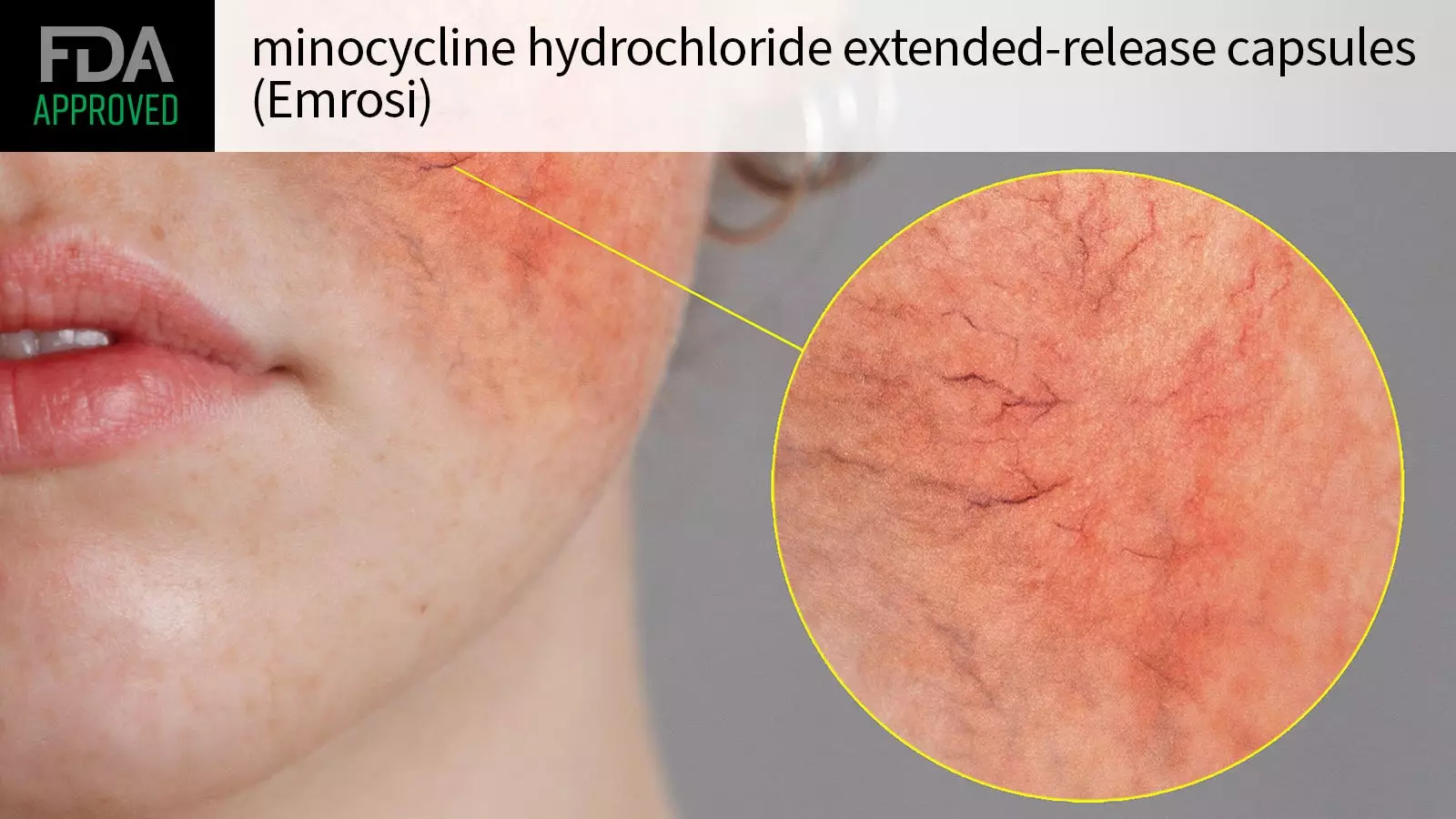In a pivotal stride for dermatological treatment, the U.S. Food and Drug Administration (FDA) has granted approval for minocycline hydrochloride extended-release capsules, marketed as Emrosi, specifically targeting the inflammatory lesions associated with rosacea in adults. Journey Medical, the pharmaceutical company behind this innovation, announced the approval amid promising results from two extensive Phase III clinical trials—the MVOR-1 and MVOR-2 studies—which tracked the progress of 653 adult participants diagnosed with papulopustular rosacea.
The trials were meticulously designed, randomizing participants into three distinct treatment groups: daily minocycline hydrochloride at a dosage of 40 mg, doxycycline (the existing standard treatment), and a placebo. Each participant underwent a regimen for a duration of 16 weeks, starting with an average of 25 inflammatory lesions alongside a Global Assessment score indicating moderate to severe severity of the condition.
Results demonstrated a compelling efficacy profile for minocycline hydrochloride, notably outperforming both doxycycline and placebo. In the first trial (MVOR-1), 65% of patients using the new formulation reached treatment success—defined as achieving an Investigator’s Global Assessment (IGA) score of 0-1—with a significant reduction from their baseline scores. In comparison, only 46% of those treated with doxycycline and a mere 31% of the placebo group experienced similar success. A similar trend was observed in the second trial (MVOR-2), where 60% of minocycline users achieved optimal treatment outcomes, markedly higher than the 31% and 27% success rates seen in the other two groups.
Moreover, the studies illustrated considerable mean reductions in inflammatory lesions for those on minocycline hydrochloride, revealing a decrease of 75-79%, compared to 60-63% and 46-47% for doxycycline and placebo, respectively. Such data not only affirm minocycline’s efficacy but also suggest a new avenue for patients who struggle with this chronic inflammatory skin condition.
Safety Profile and Precautions
While the approval represents a significant advancement, it is accompanied by a set of safety warnings that clinicians and patients must heed. Although dyspepsia was reported as the most common side effect, emerging especially among 2% of trial participants, the absence of such reactions in the placebo cohort raises critical observations regarding the drug’s tolerability.
Additionally, the prescribing information emphasizes the serious risks associated with minocycline hydrochloride. Issues such as hypersensitivity reactions, anaphylaxis, and severe skin reactions underscore the need for vigilant patient monitoring. Pregnant women and children are particularly cautioned against using this drug due to risks like permanent discoloration of teeth and potential bone growth hindrance. Given these considerations, the drug’s label also encompasses alerts concerning Clostridioides difficile-associated diarrhea, hepatotoxicity, metabolic effects, and more.
Looking into the future, Journey Medical anticipates that minocycline hydrochloride will become available to the public by the first half of 2025. This timeframe creates both hope and anticipation for those affected by rosacea, who have long sought effective treatment options. As the drug approaches market readiness, ongoing education regarding its application, benefits, and necessities for monitoring will be crucial for practitioners and patients alike. The innovative approval of this treatment heralds a new chapter in managing rosacea, offering renewed hope in the quest for clearer skin and improved quality of life for many suffering from this challenging condition.


Leave a Reply